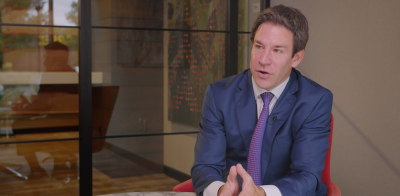Let’s not dwell too much on the challenges for equity markets—at least bonds have stopped collapsing for the time being and we’ve had a modest bounce off the recent bottom Thursday and Friday—and the potential for markets to remain a sloppy, choppy mess for the foreseeable future (hangovers can be painful indeed). Previous strategy notes have laid out rational steps to take in asset allocation to both manage volatility and improve return potential by embracing alternative investment strategies. We know our readers continue to fight inertia and feel more comfortable with their investment outcomes YTD than those who continue to extrapolate the prior 13 years’ equity and bond outcomes into infinity and hope for the best.
- Given the current volatile economic and market environment, it is important that investors consider a range of economic outcomes for positioning, particularly if we stay in an elevated inflation regime for multiple years. This outcome could arguably cause the most damage to financial assets, including both equities and bonds.
- Within a wide range of economic outcomes, no challenge is arguably greater than figuring out how to monetize the “Galactic Mean Reversion of Financial Assets and the Real Economy and Labor.” This is one of the key challenges that we are laser-focused on when managing both real assets and non-traditional areas of the credit market.
Asset outperformance over the past three decades
Over the past three decades, financial assets have significantly outperformed corporate fundamentals and the real economy. Additionally, corporate fundamentals and the real economy have substantially outperformed the labor market:
Since 20001
S&P 500 Total Return: ~340% (Even including a lost decade and the recent decline in prices)
- Nominal GDP Growth: ~146%
- Real GDP Growth: ~53%
- Corporate Profit Margins Growth: ~100% (from 5.5% to 11%).
- Median Real Wage Growth: Around 8.4%
Labor’s concurrent underperformance
Arguably the biggest driver of corporate fundamentals and the real economy outperforming labor over this period has been the multi-decade trend of labor’s share of GDP declining from 48% in 2000 to a recent low of 42%. This has recently started to mean revert to 45%. Longer term, labor’s share of income has gone down from a peak of 52% in the 1970s.
Key drivers of labor’s decline have been:
- Decline of private sector union power
- Automation
- Globalization and specifically China’s labor supply shock. Ryan Caldwell, Head of FS’s Chiron Investment Management team, often remarks how the most seminal moment in his investment career was China’s accession to the WTO in 2001.
Labor’s loss has of course been corporate America’s gain through doubling profit margins
Corporate security fundamentals increased substantially more than the real economy at the expense of labor for decades. Furthermore, despite a lost decade in the 2000s and a starting valuation of 25x forward p/e ratio, since January 2000, equity markets outperformed the real economy and labor to an even greater degree primarily driven by the printing presses at the Fed driving outrageous levels of money supply, lower growth secularly and lower interest rates until recently.
And guess what, the most important factor in suppressing wages (globalization) is now going the other way (deglobalization) driven by:
Economics – Diminished labor arbitrage and more expensive supply chains prior to the pandemic. Given the exacerbated supply chain woes of the pandemic, hard not to argue that from a pure economic perspective, globalization is over or at least receding substantially.
Politics – It is now political consensus in D.C. that globalization is at least not good for the average worker.
National security – Russia’s invasion of Ukraine further hardens the growing consensus that had built around national security concerns over trade with China.
Labor pricing power: This is happening all at a time when labor has the most pricing power in decades, highlighted most dramatically by the following stats:
- Withholding tax growth rates of 20%–22% year over year so far in 2022, which are more than double previous cyclical peaks.
- Over 5.6 million more job openings than unemployed (1.9 job openings/unemployed person).
- So, from an investments perspective, getting the “Galactic Mean Reversion of Financial Assets and the Real Economy and Labor” right will have powerful implications for active management over the following decade(s).
- Maturely recognize that corporate profit margins may compress from record levels over the next several years.
Focus on suppliers/producers and not just old-school basic materials, but also new economy infrastructure like semiconductor capital equipment despite a tough 2022 so far.
Stay short on duration for the time being but be ready and willing to pounce on the back end of the yield curve when recession risks escalate.
Be willing and able to play real assets and commodities as the current cyclical trend in most commodities and the super cycle in copper could last for years despite the potential for more near-term weakness as the Fed ruthlessly tightens financial conditions and China continues to embrace a nonsensical zero-Covid policy.
As has been the case for much of the year, the market environment is clear: The time for alts is now!




